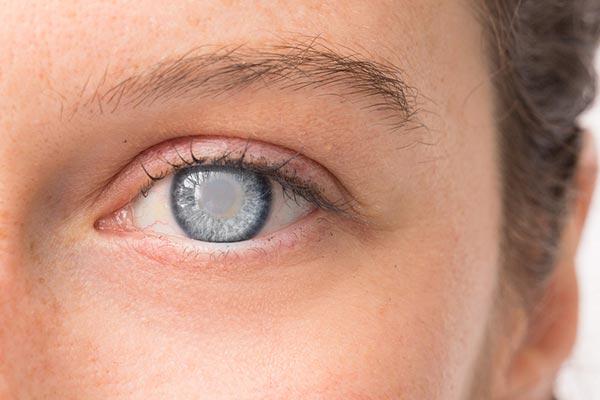A cataract is a partial or complete clouding of the lens (the structure inside the eye responsible for focusing the image). This disease has been known since ancient times. In Greek, cataract means waterfall. This is how ancient people described the eye of a person with an already mature (white cataract) when a person sees a picture as if through water streams. Today, this pathology is very common and has the greatest number of myths among ophthalmic diseases.
What are the symptoms of cataracts?
- decreased visual acuity;
- decreased night vision;
- sensitivity to bright light;
- double vision in one or both eyes;
- seeing "halos" around lights;
- appearance of dots, spots, stripes in front of the eyes;
- blurred vision;
- distortion of colour perception.
10 Biggest Cataract Myths
Myth #1: Only elderly people have cataracts
Fact: Clouding of the lens can occur at any age. Indeed, the greatest numbers of patients with cataracts are those over 60. Age-related cataract is associated with a slowdown in metabolic processes, thickening of the lens tissue and metabolic disorders. But cataracts can also be congenital (as a consequence of the action of teratogenic factors during pregnancy (alcohol, infections, radiation). Cataracts can also occur in young people as a result of eye trauma, radiation exposure, uncontrolled diabetes mellitus, long-term use of corticosteroids, and several other reasons.
Myth #2: Only mature cataracts should be removed
Fact: Before the advent of phacoemulsification cataract surgery, surgeons had to wait for the cataract to mature, meaning that a person would have to go blind before reaching the operating table. But after the introduction of ultrasound-based surgical techniques in ophthalmology, there is no longer a need to wait for the hardening of the cataract. On the contrary, the more mature the cataract, the more energy of ultrasound should be used and the higher is the risk of complications and negative impact on the eye tissue. Also, cataracts at a late stage can provoke the appearance of secondary glaucoma which is an irreversible loss of vision due to the death of the optic nerve cells.
Myth #3: Cataracts can be treated with drops.
Currently, no drops have been created to restore the transparency of the lens. The development of cataracts is associated with a change in the structure of proteins within the lens tissue. Some drops can temporarily halt the clouding process, but they cannot prevent it completely. Only a lens replacement surgery can solve the cataract problem once and for all.
Myth #4. Lens replacement surgery is very painful and long
This is not true. The surgery is done under local anesthesia (pain-relieving drops are instilled). There are no nerve endings in the lens, so you will not feel anything. The surgery lasts 10-15 minutes. There are no stitches because the surgeon makes micro-incisions (3mm) which are self-sealing.
Myth #5. After the operation, you have to stay in hospital for a long time
Fact: Cataract surgery today is an outpatient procedure. Afterward, you can go home and follow your doctor's instructions (instillation of eye drops) at home. Even a few hours after surgery the patient can see well enough. Then you will have to go to the doctor for check-ups. The recovery period lasts about a month. At the same time, the patient returns to normal activities, but it is important to exclude heavy physical work and protect the eyes from negative environmental factors.
Myth #6. Cataracts can occur again
After replacement of your lens with an artificial one, the lens itself cannot become cloudy and will serve you the rest of your life. Sometimes a secondary cataract develops after surgery, which is a thickening of the posterior wall of the capsular bag that contains the lens. This pathology is corrected by laser in just a few minutes. The procedure is performed using a slit lamp, with no incisions, no pain, and no restrictions afterward.
Myth #7. You will still have to wear glasses after the surgery
Before the surgery, your doctor will discuss your visual needs with you and you will decide which design of the artificial lens is right for you. There are multifocal and monofocal intraocular lenses (IOLs). Multifocal IOLs allow you to see at all distances and not to use glasses; monofocal IOLs allow you to see well in the distance and you will need to wear glasses for reading or small work.
Myth #8. Intense close visual work and reading cause cataracts
If you have cataracts, you may have difficulty focusing when reading or working at close distances because the lens hardens and loses its elasticity. Reading itself does not affect the progression of lens protein degradation.
Myth #9. Cataract surgery is dangerous
In fact, in 95 percent of cases, cataract surgery is successful. Phacoemulsification cataract surgery is one of the most modern and safest surgeries.
Myth #10. The cataract can spread to the other eye
If you have a cataract in only one eye, for example, because of an injury, then it cannot spread to the other eye. Cataracts most often develop in both eyes but progress to different degrees.






